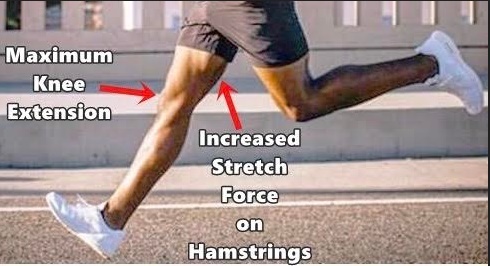The extent to which heel strike running is a major risk factor for hamstring injury is that while the foot lands squarely on the heel, the knee fully unbends which directly causes the hamstrings to stretch to become too strained with tension. What’s worse, this happens under high-impact conditions due to the heavy compressive wave caused by landing with a fully extended leg, which also results in a longer displacement between initial foot strike position and the mass of the body. The net consequence of this is more compressive loads is transmitted to the hamstrings while the hammies are locked in a hyper-stretched state at touchdown. In contrast, hamstring injury is less likely in forefoot running since a smaller over-stride angle results at touchdown which prevents the hamstrings from stretching beyond their maximum tolerable limit. Read more here! 
Bretta Riches
BSc Neurobiology; MSc Biomechanics candidate, ultra minimalist runner & founder of RunForefoot. I was a heel striker, always injured. I was inspired by the great Tirunesh Dibaba to try forefoot running. Now, I'm injury free. This is why I launched Run Forefoot, to advocate the health & performance benefits of forefoot running and to raise awareness on the dangers of heel striking, because the world needs to know.
Latest posts by Bretta Riches (see all)
- Cushioned Running Shoes Found to Be Bad for Ankles - 23/04/2024
- Forefoot Running and Achilles Pain - 19/04/2024
- Does Foot Strike Really Matter in Running? YES! - 17/04/2024

